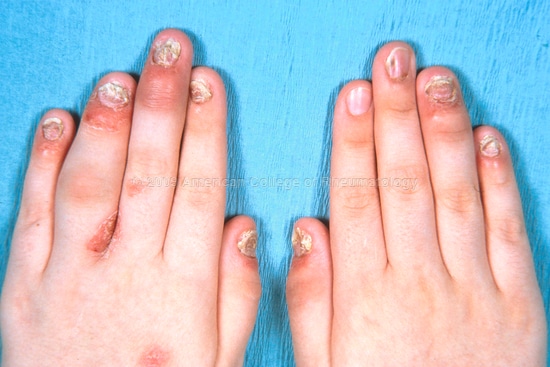Psoriatic Arthritis is a form of chronic arthritis that is usually associated or linked with Psoriasis, a kind of skin disease. Unlike rheumatoid arthritis which occurs due to uric acid crystalline formation in the joints, this one is because of inflammation in the joints itself, therefore limiting the patient’s overall mobility and movement, depending on the affected join area.

Psoriatic Arthritis usually develops between people aged 30 to 50 years old, though tests also show that it can also affect children at an early stage. Those who experience this often have a history of either arthritis or psoriasis in their family tree. Psoriatic Arthritis must be diagnosed correctly in order to apply the right kind of examination and proper treatment.
There are five known types of Psoriatic Arthritis, namely:
- Asymmetric Psoriatic Arthritis – About 30 to 50 percent of patients suffering Psoriatic Arthritis is usually noticed in this early stage. This one can either affect joints in a random way such as right knee and left elbow or lower back and left shoulder.
- Symmetric Psoriatic Arthritis – This also affects about 30 to 50 percent of patients with joints in the fingers and toes are often affected in both sides of the body.
- Distal Interphalangeal Predominant Psoriatic Arthritis – In this form, the joints that are closest to the finger and toenails are mostly affected. Nail changes along with psoriasis are also being noticed.
- Axial Arthritis or Psoriatic Spondylitis – Affecting 30 to 35 percent of most patients, this one is characterized by inflammation of one or more vertebrae and joints in the pelvic area.
- Arthritis Mutilans – This kind of Psoriatic Arthritis is somewhat rare but the most painful and destructive type of psoriatic arthritis.
